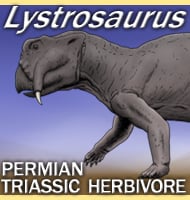Endothiodon
In Depth Endothiodon is certainly one of the more interesting genera of dicynodont. First named in 1876 from fossils discovered in South Africa, Endothiodon is not only known from other African countries such as Tanzania, Zambia and Mozambique, but the genus is also known from India in Asia, and now also Brazil in South America. … Read more
